Recently, I got an email from a reader (hi Elaine!) with some vegetarian cooking related questions. I figured rather than respond via email, I’d answer in a post (in case others are wondering too). Since there are quite a few questions though, I am going to go through them one at a time. And so continues the “readers request” post series.
Elaine: I’m not the most confident-in-the-kitchen girl, especially when it comes to veggies. I love veggies, but since moving out on my own, I usually go for frozen instead because I’m not sure how to cook fresh stuff. I hate the way frozen veggies taste and I’ve seen that you do roasted veggies a lot; so first, what kind of veggies can you roast? And how do you roast them? I think this would help me out a lot to have roasted veg on hand for meals.
Let me preface this by reminding all y’all that I’m no culinary expert, but I do think I roast veggies with enough regularity that I have the process down. As far as I’m concerned, roasting vegetables is probably the best thing about the winter months.
But vegetables are definitely not the only food that can be roasted. Fruit, nuts, tofu, tempeh, chickpeas…you get the idea…anything and everything! It’s all fair game for the oven. So there’s the answer to your first question.
Next issue is knowing how to do it. There seems to be a bit of intimidation when it comes to the oven. The only way to get over your fear is to use it, and continue to use it.
My poor neighbors in NYC probably wanted to kill me for how often I set off the fire alarm, but those itty bitty apartments were not built for domestic people at all.
Since Elaine specifically mentioned vegetables, that’s what I’m going to show, but know that the same method applies to anything else you want to roast.
Here are some veggies that are great for roasting:
- root vegetables (carrots, parsnips, turnips, rutabaga, beets, etc.)
- tubers (potatoes, yams, sweet potatoes, sunchoke, etc.)
- winter squash (butternut, acorn, pumpkin, spaghetti, delicata, etc.)
- summer squash (zucchini, yellow squash, etc.)
- bulbs (onions, garlic, leeks, scallions, etc.)
- tomato (ok this is actually a fruit)
- greens (broccoli, Brussels sprouts, string beans, kale, etc.)
- eggplant, bell peppers, cauliflower, corn, okra
And that’s just off the top of my head! Rather than go through each and every vegetable, I’ll show you the most time consuming one.
If you can dodge a wrench, you can dodge a ball you can roast squash, you can roast anything. [I bet it’s not too often you hear a Dodgeball reference, huh?]
In order to simplify this (because it’s not complicated), I will give you 3 steps to go by. Always.
- Oven to 375 degrees.
- Toss food in olive oil and salt.
- Cook for 30 minutes.
The only variation is the time. 30 minutes is usually the minimum I go with, but some things are quicker to roast and will only need half an hour.
Unlike baking, with cooking you can tweak things as you go. The length of time you roast your vegetables depends on how “done” you like them. It could be anywhere form 30 minutes to 1 hour. If you like them a little crunchy, then they will be on the shorter end of the spectrum, but if you like them softer and more blackened, then leave them in longer. As long as you don’t forget about them entirely, you won’t mess them up. [And even if you do – oh well – I’m pretty sure everyone has done it at some point]
Now is the photo tutorial part. Remember, there may be other techniques, but this is my method of madness.
Wash the squash.
Chop the squash where the neck meets the bulbous part.
Slice the rest of the neck in 3/4 – 1 inch circular sections.
One by one, trim the edges of the skin off the rounds.
Cut the squash into similarly sized chunks (about 3/4 – 1 inch cubed) and place on a cooking sheet (you can spray it if you want, but once they are all chopped up I toss them in oil in the same pan so I don’t dirty a separate bowl).
Drizzle oil on the squash and toss it until everything has been sufficiently covered in oil. Then add salt.
Don’t forget about the rest of the squash though.
Next, cut through the bulbous base.
It’s easier to do this than the neck portion of the squash because this part is hollow.
Scoop out the seeds (set aside if you want to roast them as well).
Lightly coat each half in oil, inside and out, and set face down on a baking sheet.
If you have patience, you could trim the skin off this part of the squash and chop it up too, but (in my opinion) it takes far longer than it’s worth.
Leaving this part of the squash together gives you more options on how to use it later. You can use the halves as bowls and stuff them…you could scoop out the squash and puree it…or you could just eat it roasted like the other cubed parts…either way.
I know some sources say to toss or flip the veggies after ~15-20 minutes, but I rarely do this. I just leave them be and once 30 minutes has passed I check on them to see how brown they are looking. Thirty minutes is my golden standard. I truly don’t even think about them until the timer dings at the half hour mark.
The smaller they are, the faster they cook, so 30 mins may be perfect if you chop ‘em into little bites.
Personally, I like my veggies on the more bronzed side. Not charred, but very done.
I can tell when the chunks of squash are done because they get brown, but the way I test the done-ness of the whole squash is by stabbing the skin. If it pierces through (into the flesh) easily, it’s done [you can see the knife marks in the photo above].
Both the cubed squash and the halved squash took 35 minutes on 375.
Here are some extra pointers:
- If you like bronzed veggies like I do, crank the oven up to broil for the last 2 minutes. It’s an easy way to add color and crisp. Just be sure to set the timer because some ovens are really powerful and even a few minutes will cause some serious browning.
- If you are roasting several different types of vegetables you can still use the same baking sheet, just don’t over-pack them. The vegetables can touch, but they shouldn’t pile up on top of each other. This may seem obvious, but if you’re roasting a lot of vegetables, use multiple baking sheets. If you’re roasting things with very different cooking times (like potatoes and brussels sprouts) you can put them on different baking sheets and stagger the timing – or you can chop the item that takes longer (potatoes) into smaller pieces so it’s cooking time is on par with the other item(s).
- The variations for seasonings are endless. I only mentioned olive oil and salt, but that’s because I like having the option to use the vegetables in different dishes after they are roasted. If you want to change things up though, fresh (or dried) herbs can be nice ways to add some pizzazz (some great combos include potatoes with rosemary, carrots with thyme, and/or winter squash with sage).
- Paprika and cayenne are great on eggplant.
- Other oils worth trying out are coconut or canola. Coconut oil on squash and carrots makes my mouth water just typing this (it’s crazy delicious). Canola oil has a lighter flavor than olive oil and is great with greens.
- A little lemon juice or orange zest gives a bit of zing to both veggie and proteins (tempeh/tofu), too.
- Soy sauce and sesame are also great ways to add flavor, but they definitely steer a dish in the Asian direction.
And that’s it! Roasted vegetables are great as a side dish or a main dish – perhaps over some quinoa, rice, or another whole grain. And once you’ve mastered vegetables, you can try your hand at tofu and other plant-based foods.
Hopefully this was helpful and will encourage you to give roasting a shot.
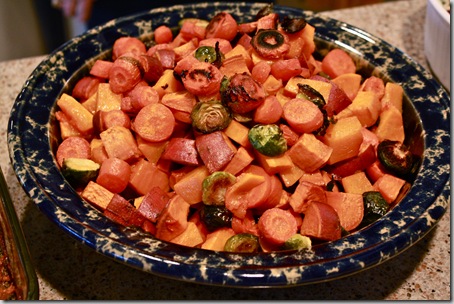
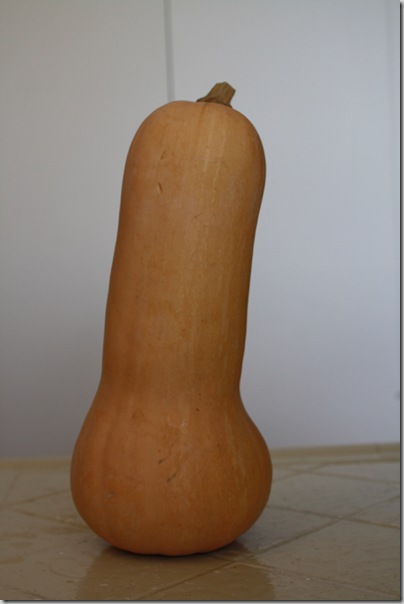
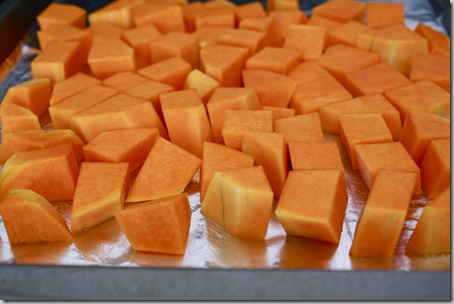
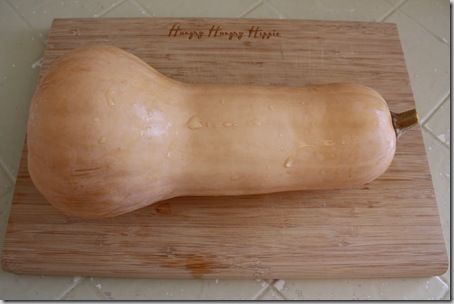
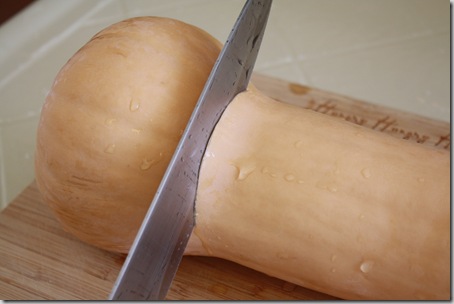
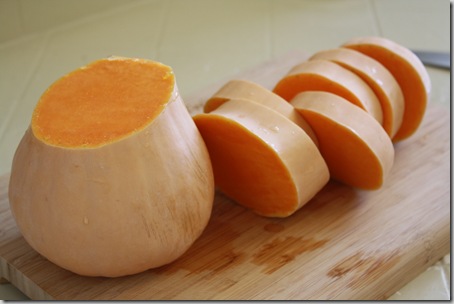
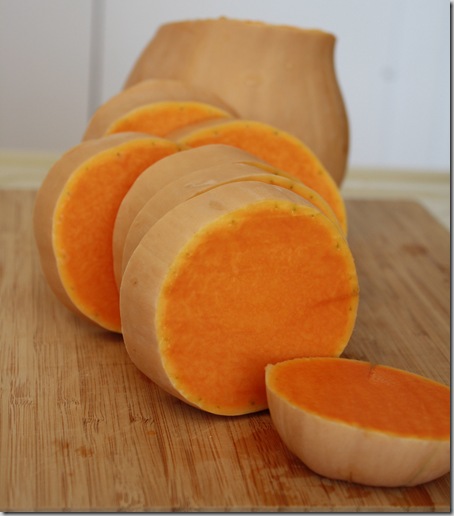
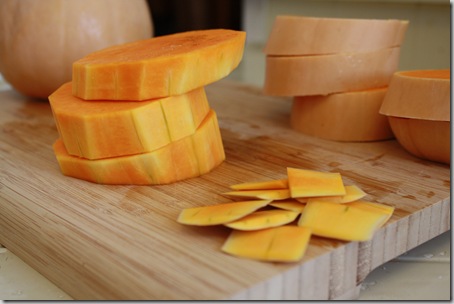
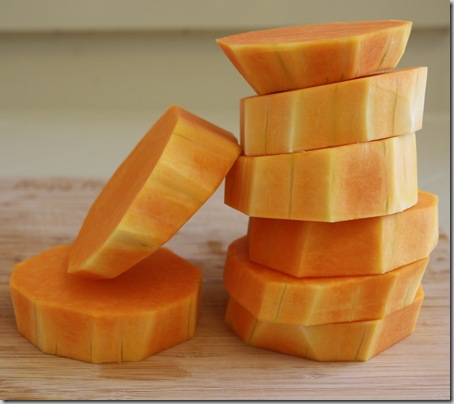
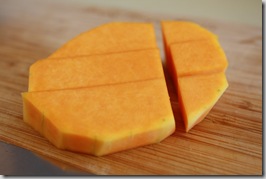
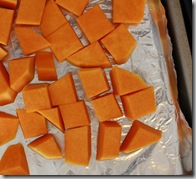
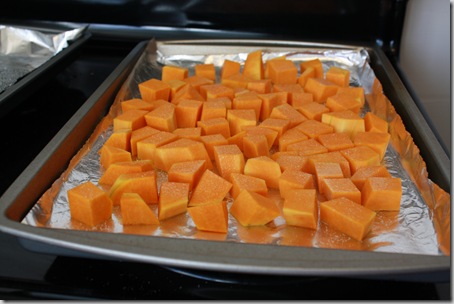
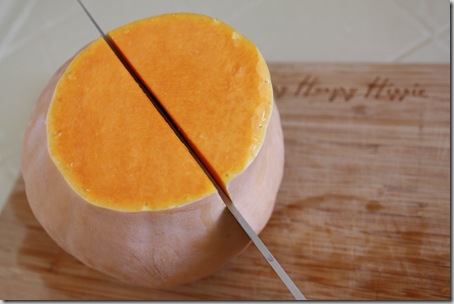
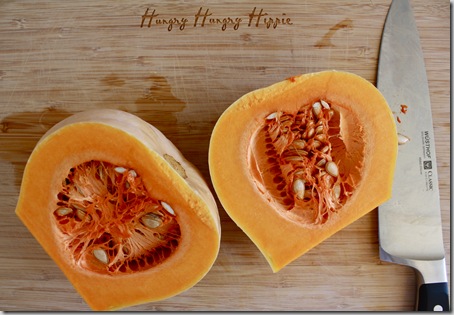
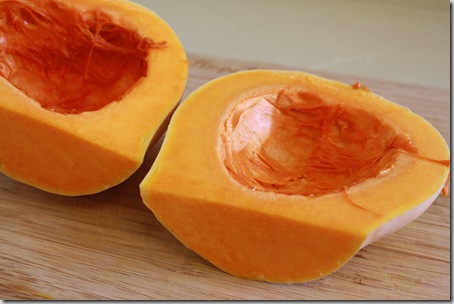
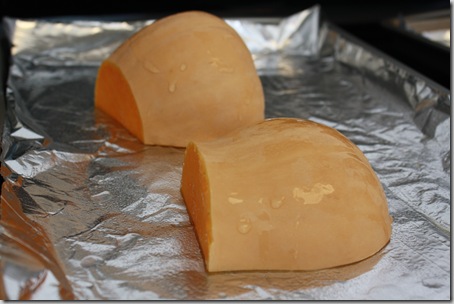
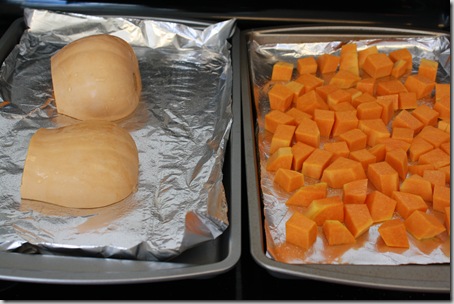
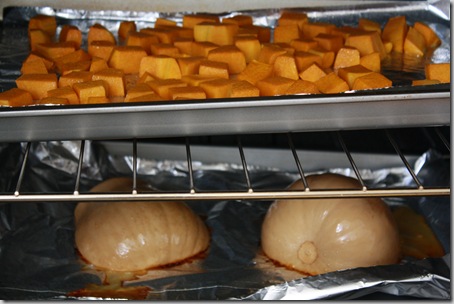
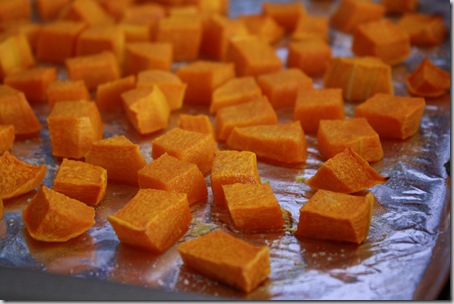
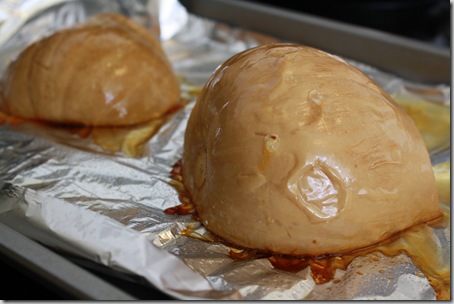
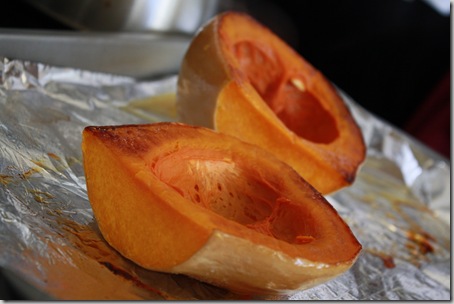
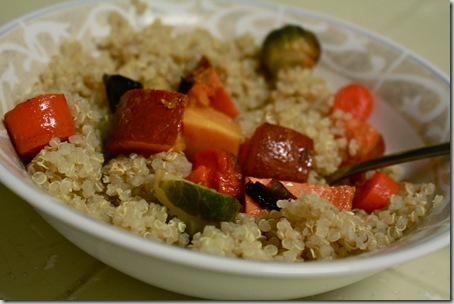
Do you have to cover them in olive oil, or do you just do that for flavor? I’ve done butternut squash without it and it turned out fine, but I didn’t know if it helps with other veggies (haven’t gone beyond squash…)
For squash, I never use olive oil, but I *do* sprinkle a little bit of cinnamon and nutmeg in addition to the usual s&p. So so so delicious.
I love how soft and delicious squash gets when roasted — we roasted up a few varieties of local squash for thanksgiving, and every bite just melted in your mouth. What a great idea for a tutorial! I’m with Sarah — cinnamon does to great things!
Great break down of the process! Can’t wait to try it!
Great post! I love roasted vegetables, esp broccoli.
Yessss! I think if I could only cook one thing for the rest of my life, it would be roasted vegetables. They are so delicious, and so versatile.
I love how you peeled those little rounds AFTER you sliced them. I think butternut squash is one of the hardest to peel – I will have to try it your way.
Roasting totally brings out the magic in veges… such a good cooking technique. I love a good roasted vege pizza with a stack of hummus on top, yummo.
Elise, thank you for simplifying roasted veggies!
hey elise, it’s elaine! thank you for this post 🙂 i like the step by step and that you broke it down, even with pics. i have never even bought a squash, but now i might pick one up. appreciate all the helpful tips 🙂 the only veg i’ve ever roasted are sweet potatoes – after getting advice from katie over at yesiwantcake; i’m looking forward to trying some others, like broccoli, YUM. thank you elise 🙂
This post is super duper helpful, thanks so much! I love roasted vegetables – they get super crisp, yet are still nice and tender.
love your blog, you are an inspiration to me. I get great ideas on what to pack for lunch from your blog. Keep them coming. Thank You
thanks barb! i will 🙂
no prob! ill be answering the rest of your questions in another post soon.
hey amry, glad to help 🙂
yummo indeed!
Do you always use oil or can you use a non stick spray? Great tips by the way! I love roasted broccoli but always seem to burn it.
Actually yes, just a little bit of oilve oil/any oil makes the outside carmalize and get that restaurant style roasted vs dried out and shrively… A mister or spray is all you need (add a bit of basalmic vinegar for amazing-ness!)
yeah you could use cooking spray, but ive found the oil tastes better and helps hold me over longer. plus a little goes a long way if you are good at shake ‘n bake action.
ps i burn my broccoli too but i like it that way 🙂
yes to both sarah and Tt…you *can* use cooking spray instead, but it does tend to get a little dried (as opposed to rich and moist). i like olive oil because it helps it bronze and it tastes better. plus it holds me over longer. a little goes a long way if youre good at mixing – a mister would be a great tool to have though!
Great post! So helpful to hear another person’s steps.
Pingback: Links You’ll Love « Moi Contre La Vie
Pingback: Butternut-Sqash Pizza! « vegansmarties
Pingback: Clean & Simple Veggie-Fry « FODMAPS diet
Elise, can you give an estimate of how much oil you use per a pound or so of veggies? How do you measure? I have about 3/4 pound of parsnips in the oven now and I used 1 full T of coconut oil. I think that might be too oily and fatty. Never tried this before.
hmmm…im not really sure how much 3/4 a pound of veg is, but 1 tbsp doesnt seem like much to me. if it tastes oily or greasy, i guess cut back next time.
i usually eyeball it in terms of oil, but id say 1 tbsp per 2-3 cups of veggies is probably about what i use.